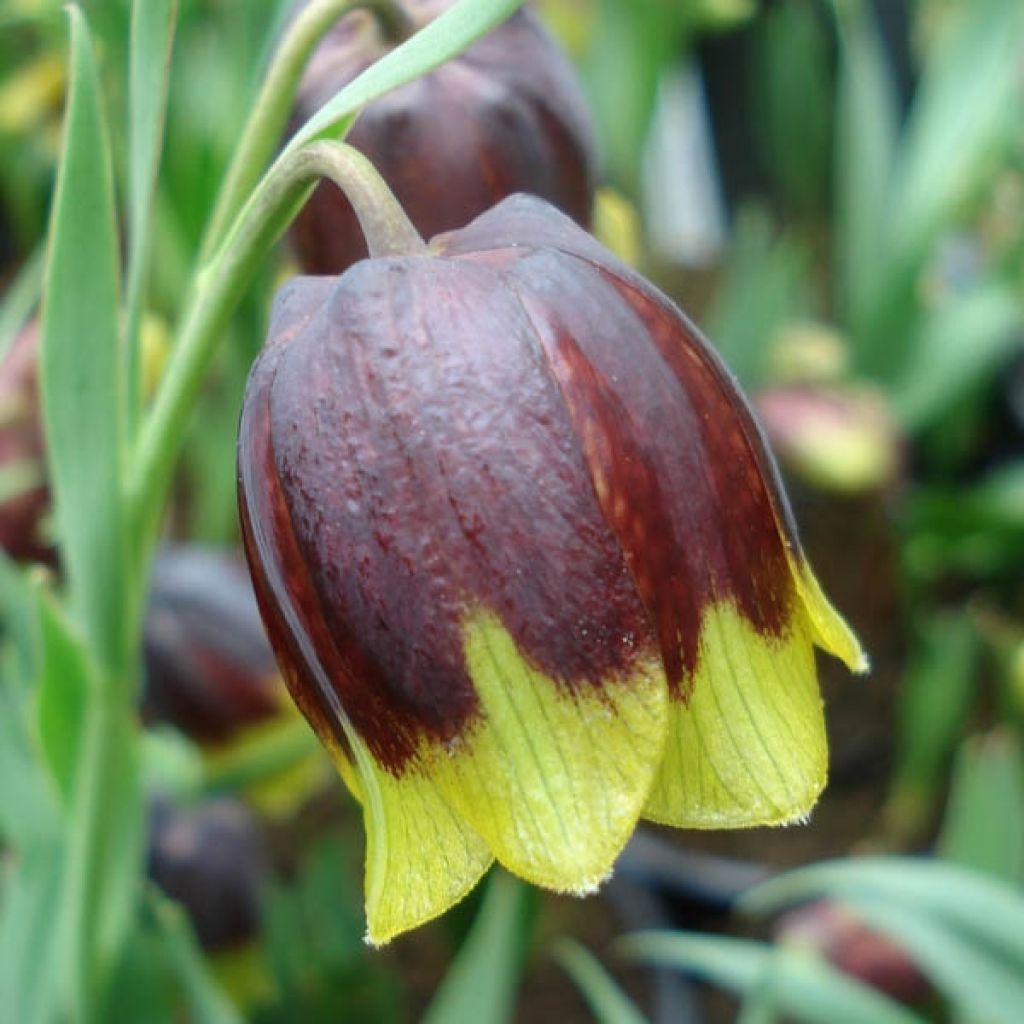

Fritillaria michailovskyi
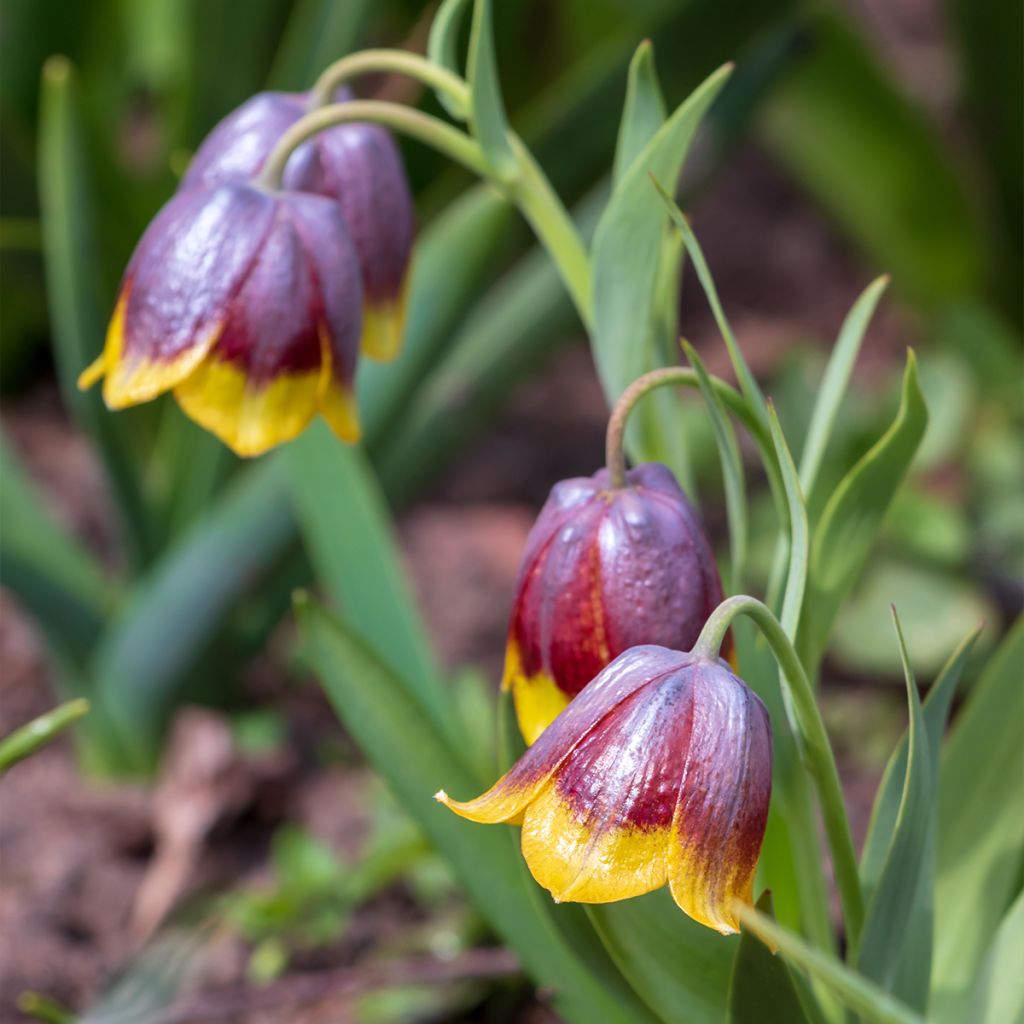

Fritillaria michailovskyi
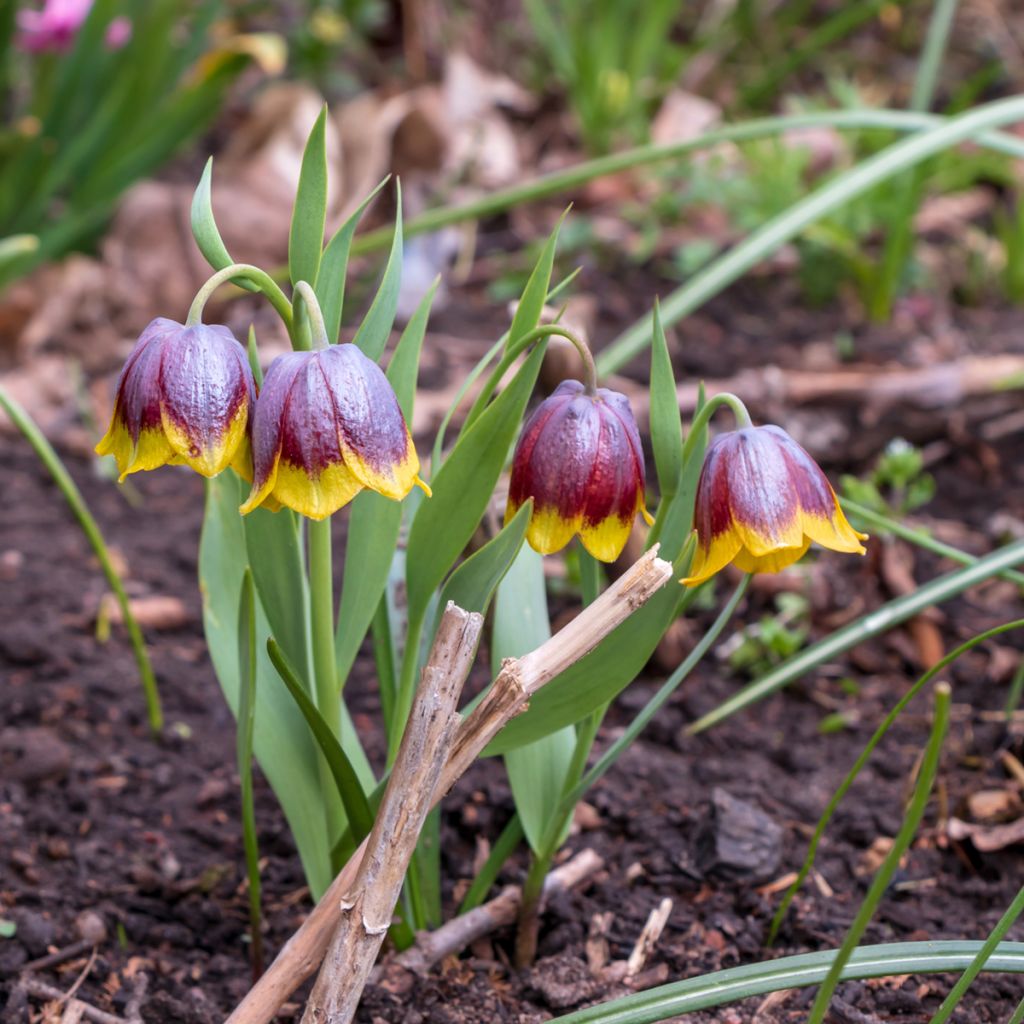

Fritillaria michailovskyi
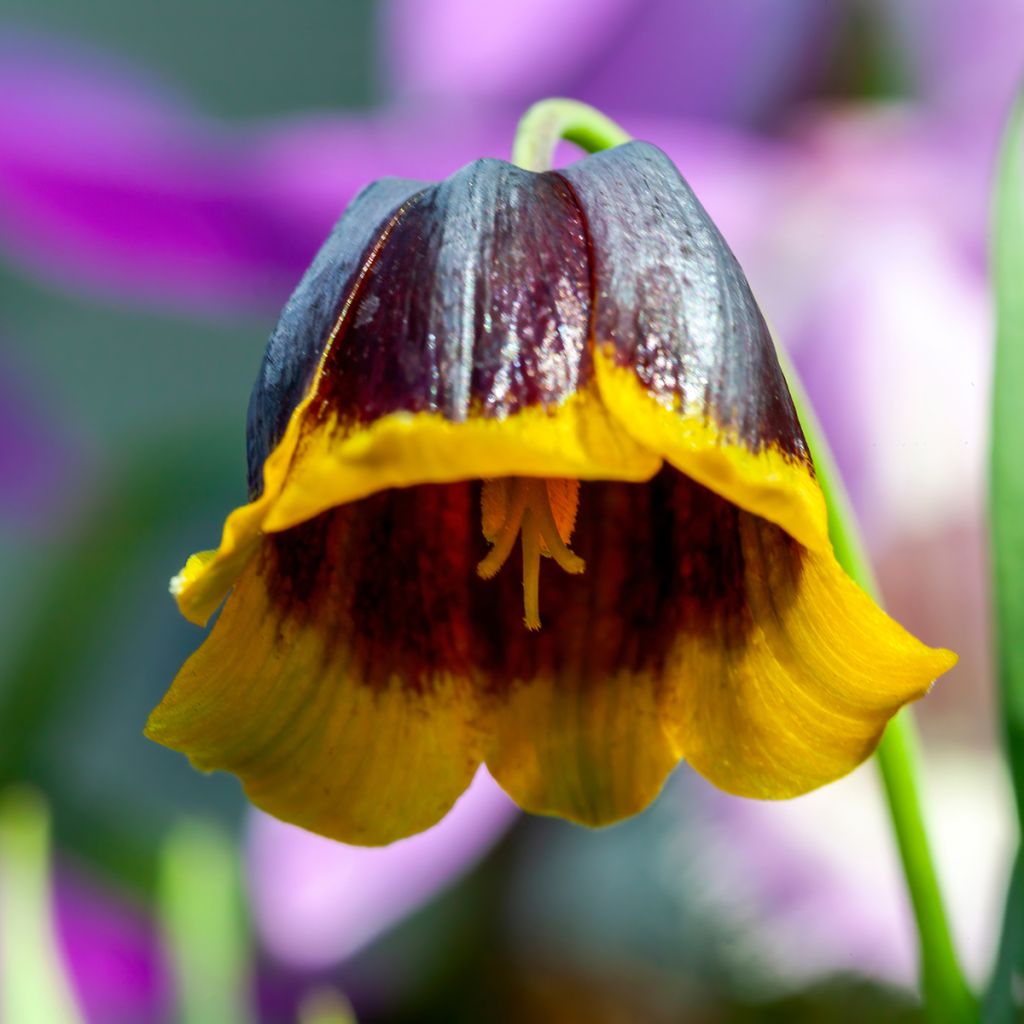

Fritillaria michailovskyi
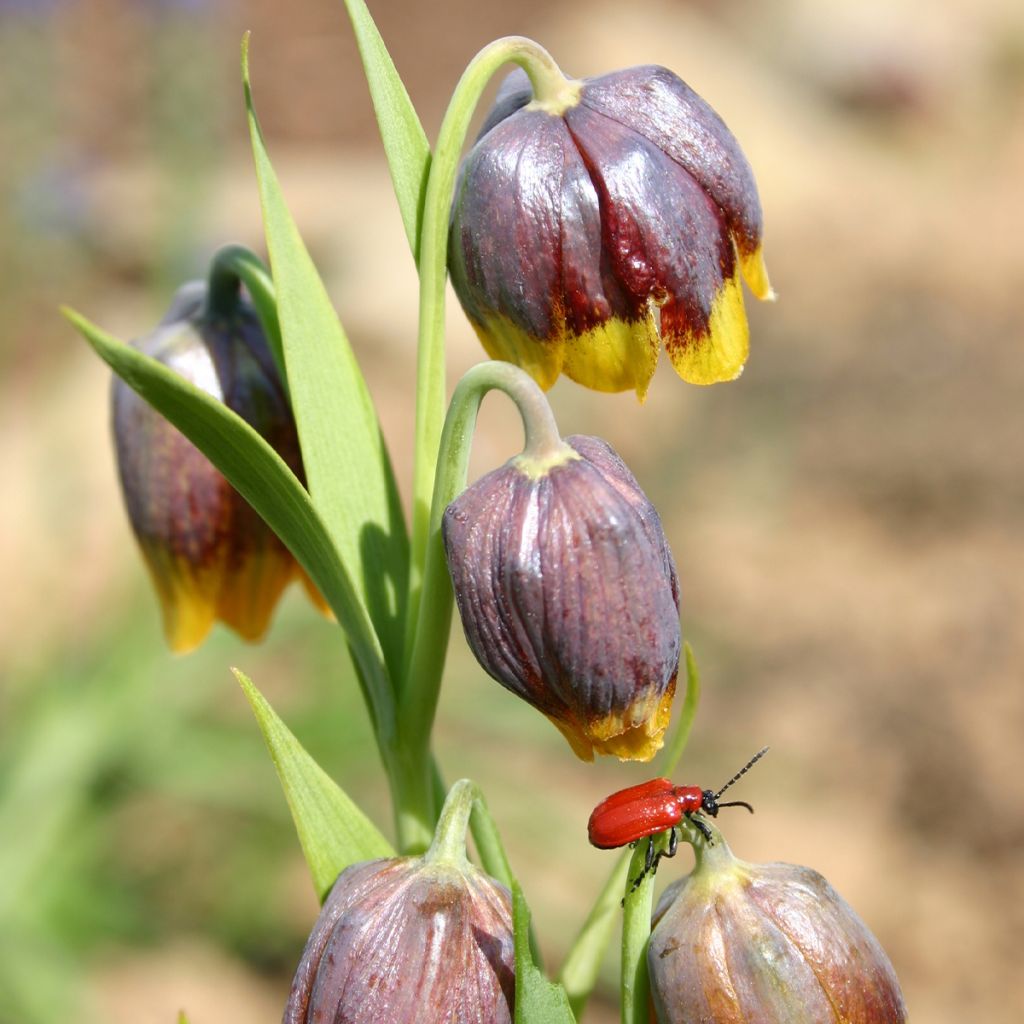

Fritillaria michailovskyi
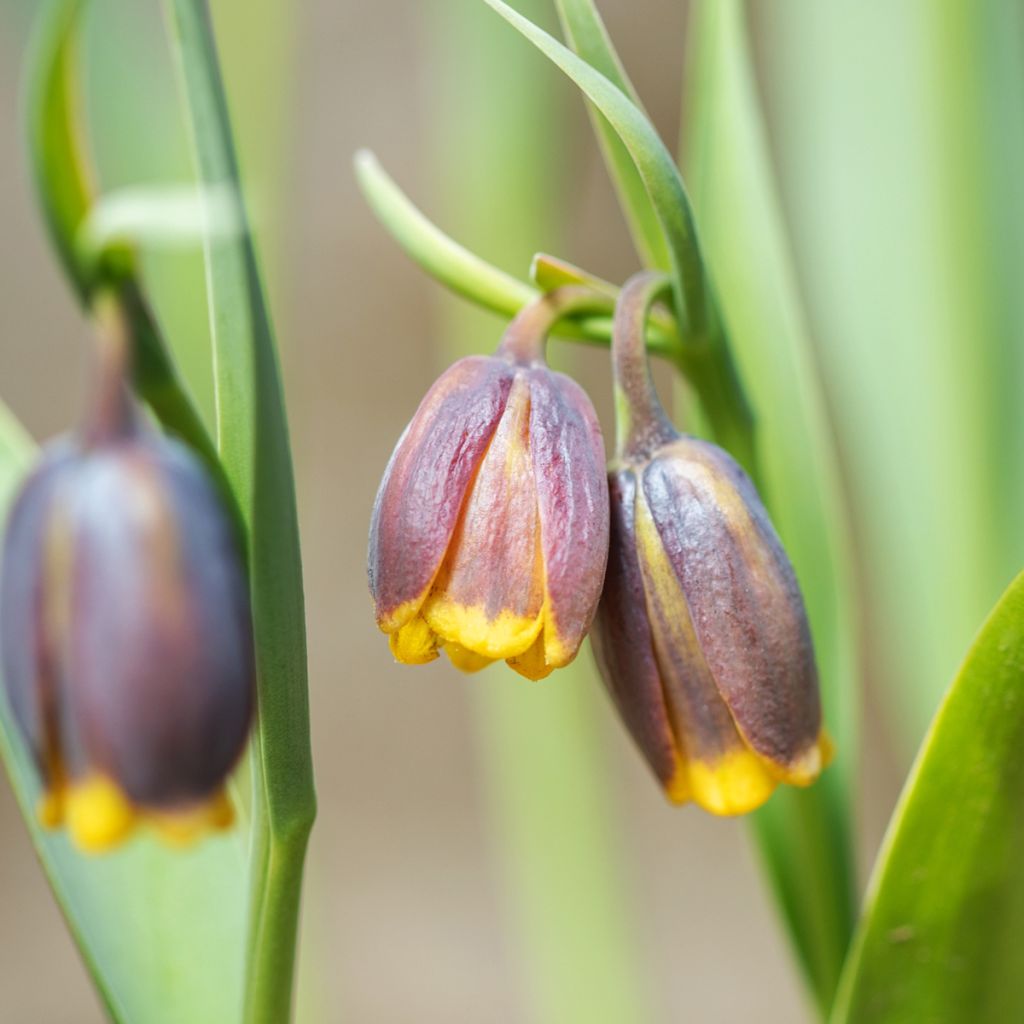

Fritillaria michailovskyi
Fritillaria michailovskyi
Fritillaria michailovskyi
Michailovski Fritillary
The fritillary bulbs were shriveled and very dry. The 5th one was cut in half. Not much chance of recovery for this batch.
Marguerite , 18/12/2024
This plant carries a 6 months recovery warranty
More information
We guarantee the quality of our plants for a full growing cycle, and will replace at our expense any plant that fails to recover under normal climatic and planting conditions.
From €5.90 for pickup delivery and €6.90 for home delivery
Express home delivery from €8.90.
Does this plant fit my garden?
Set up your Plantfit profile →
Description
Fritillaria michailovskyi is a small fritillary native to the mountainous regions of northeastern Turkey. It is known for its unusual spring flowering, consisting of pendulous mahogany bell-shaped flowers with yellow-tipped petals. To successfully cultivate this amazing bulbous plant, it is important to provide it with conditions similar to those found in its natural habitat. It should be planted in a sunny rock garden protected from excessive moisture in winter. Growing it in pots allows for easy moisture management and protection from heavy frost.
Fritillaria michailovskyi belongs to the Liliaceae family. In its natural habitat, it grows in scree and on rocky slopes with early snow. It is relatively hardy (-10 to -15°C (14 to 5°F)) and tolerates limestone well. However, it does not thrive in a climate that is too dry in summer or too wet in winter. It is a deciduous perennial bulbous plant that goes dormant in dry soil during winter. Vegetation emerges in spring, consisting of upright, slightly bluish medium green linear leaves measuring 5 to 9cm (2 to 4in) long. The height of this fritillary can reach 15 to 20cm (6 to 8in) when in bloom. Flowering occurs in April-May. The floral stems bear 1 to 4 pendulous flowers with shiny mahogany bell-shaped blooms with yellow tips. The foliage dries up some time after flowering, while the bulb enters dormancy. During this time of year, excess moisture will cause the bulb to rot.
Fritillaria michailovskyi requires soil that remains slightly moist from spring to summer, but it should be protected from winter moisture with a covering or mulch. In favourable climates, it thrives in sunny borders, rock gardens, or gravel beds. Plant in groups. It is also a lovely plant to cultivate in pots on a patio or balcony.
Report an error about the product description
Fritillaria michailovskyi in pictures
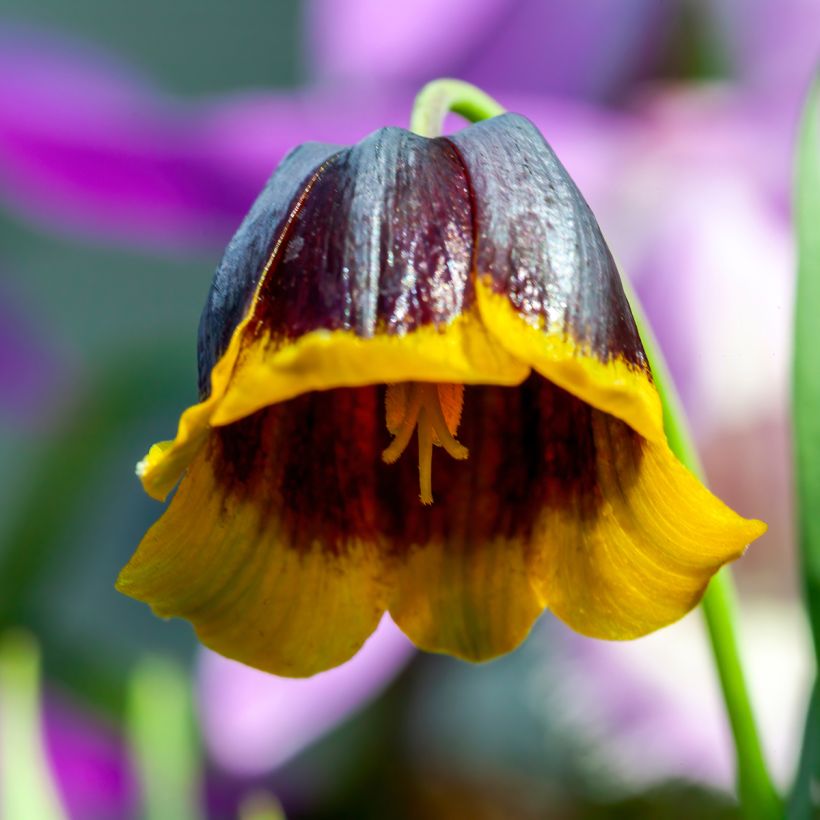

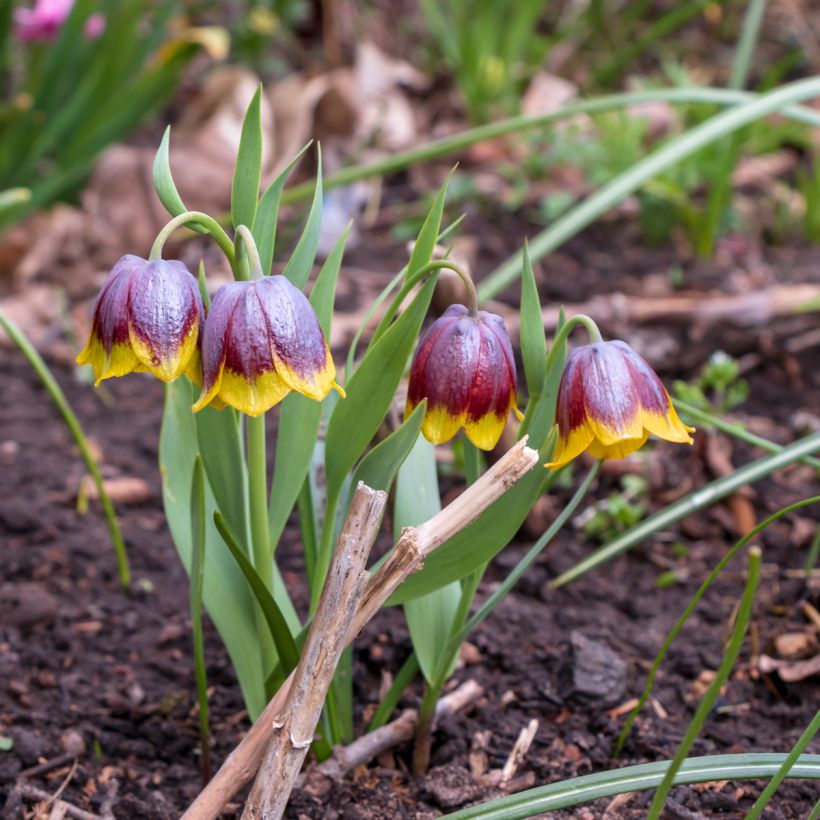

Plant habit
Flowering
Foliage
Botanical data
Fritillaria
michailovskyi
Liliaceae
Michailovski Fritillary
Central Asia
Planting and care
This bulbous plant should be planted in early autumn at a depth of 15 to 20cm (6 to 8in) in well-drained soil. Adding sand or fine gravel can prevent bulb rot. It can withstand short frosts of around -12 to -15 °C (10.4 to 5°F), but only in dry soil (the winter is dry in its natural habitat). Protect it from winter humidity in regions where the temperature doesn't drop below -5 °C (23°F). After flowering, the leaves should be left to allow the bulb to regenerate. This species is not suitable for climates that are too dry in summer. Fritillaria michailovskyi can be grown in a pot with well-draining substrate, which allows it to be sheltered in winter.
Planting period
Intended location
Care
-
, onOrder confirmed
Reply from on Promesse de fleurs
Haven't found what you were looking for?
Hardiness is the lowest winter temperature a plant can endure without suffering serious damage or even dying. However, hardiness is affected by location (a sheltered area, such as a patio), protection (winter cover) and soil type (hardiness is improved by well-drained soil).

Photo Sharing Terms & Conditions
In order to encourage gardeners to interact and share their experiences, Promesse de fleurs offers various media enabling content to be uploaded onto its Site - in particular via the ‘Photo sharing’ module.
The User agrees to refrain from:
- Posting any content that is illegal, prejudicial, insulting, racist, inciteful to hatred, revisionist, contrary to public decency, that infringes on privacy or on the privacy rights of third parties, in particular the publicity rights of persons and goods, intellectual property rights, or the right to privacy.
- Submitting content on behalf of a third party;
- Impersonate the identity of a third party and/or publish any personal information about a third party;
In general, the User undertakes to refrain from any unethical behaviour.
All Content (in particular text, comments, files, images, photos, videos, creative works, etc.), which may be subject to property or intellectual property rights, image or other private rights, shall remain the property of the User, subject to the limited rights granted by the terms of the licence granted by Promesse de fleurs as stated below. Users are at liberty to publish or not to publish such Content on the Site, notably via the ‘Photo Sharing’ facility, and accept that this Content shall be made public and freely accessible, notably on the Internet.
Users further acknowledge, undertake to have ,and guarantee that they hold all necessary rights and permissions to publish such material on the Site, in particular with regard to the legislation in force pertaining to any privacy, property, intellectual property, image, or contractual rights, or rights of any other nature. By publishing such Content on the Site, Users acknowledge accepting full liability as publishers of the Content within the meaning of the law, and grant Promesse de fleurs, free of charge, an inclusive, worldwide licence for the said Content for the entire duration of its publication, including all reproduction, representation, up/downloading, displaying, performing, transmission, and storage rights.
Users also grant permission for their name to be linked to the Content and accept that this link may not always be made available.
By engaging in posting material, Users consent to their Content becoming automatically accessible on the Internet, in particular on other sites and/or blogs and/or web pages of the Promesse de fleurs site, including in particular social pages and the Promesse de fleurs catalogue.
Users may secure the removal of entrusted content free of charge by issuing a simple request via our contact form.
The flowering period indicated on our website applies to countries and regions located in USDA zone 8 (France, the United Kingdom, Ireland, the Netherlands, etc.)
It will vary according to where you live:
- In zones 9 to 10 (Italy, Spain, Greece, etc.), flowering will occur about 2 to 4 weeks earlier.
- In zones 6 to 7 (Germany, Poland, Slovenia, and lower mountainous regions), flowering will be delayed by 2 to 3 weeks.
- In zone 5 (Central Europe, Scandinavia), blooming will be delayed by 3 to 5 weeks.
In temperate climates, pruning of spring-flowering shrubs (forsythia, spireas, etc.) should be done just after flowering.
Pruning of summer-flowering shrubs (Indian Lilac, Perovskia, etc.) can be done in winter or spring.
In cold regions as well as with frost-sensitive plants, avoid pruning too early when severe frosts may still occur.
The planting period indicated on our website applies to countries and regions located in USDA zone 8 (France, United Kingdom, Ireland, Netherlands).
It will vary according to where you live:
- In Mediterranean zones (Marseille, Madrid, Milan, etc.), autumn and winter are the best planting periods.
- In continental zones (Strasbourg, Munich, Vienna, etc.), delay planting by 2 to 3 weeks in spring and bring it forward by 2 to 4 weeks in autumn.
- In mountainous regions (the Alps, Pyrenees, Carpathians, etc.), it is best to plant in late spring (May-June) or late summer (August-September).
The harvesting period indicated on our website applies to countries and regions in USDA zone 8 (France, England, Ireland, the Netherlands).
In colder areas (Scandinavia, Poland, Austria...) fruit and vegetable harvests are likely to be delayed by 3-4 weeks.
In warmer areas (Italy, Spain, Greece, etc.), harvesting will probably take place earlier, depending on weather conditions.
The sowing periods indicated on our website apply to countries and regions within USDA Zone 8 (France, UK, Ireland, Netherlands).
In colder areas (Scandinavia, Poland, Austria...), delay any outdoor sowing by 3-4 weeks, or sow under glass.
In warmer climes (Italy, Spain, Greece, etc.), bring outdoor sowing forward by a few weeks.



































